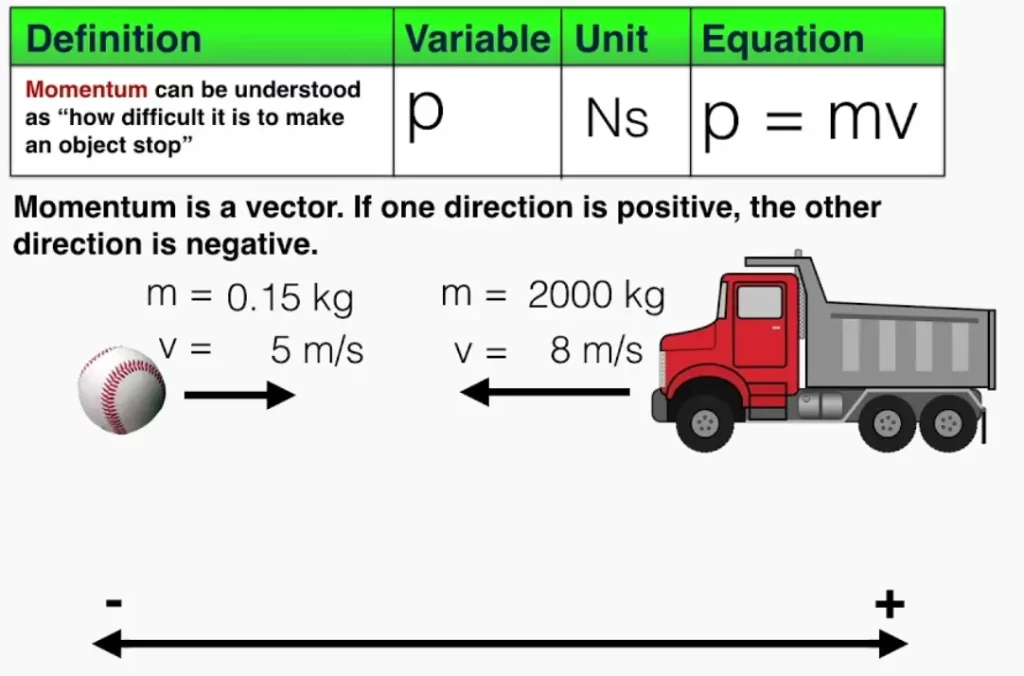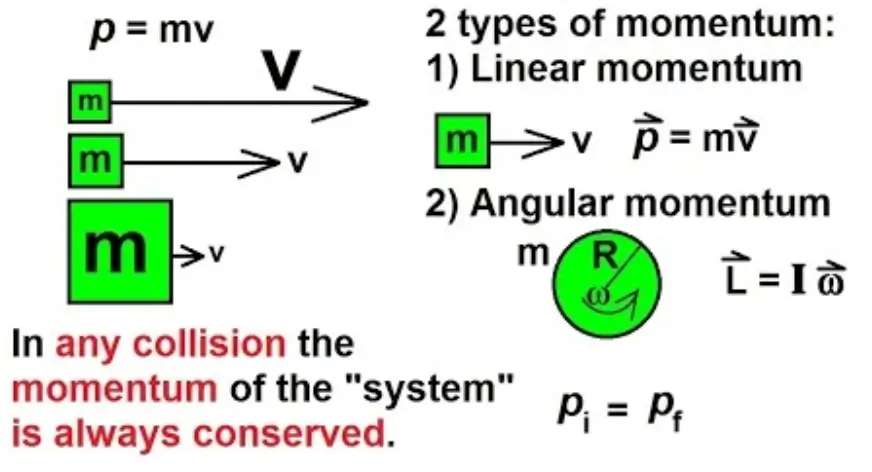Momentum is a fundamental concept in physics that describes the motion of objects. It is a vector quantity that combines an object’s mass and velocity, providing valuable insights into its behaviour during motion. Whether you’re studying classical mechanics, astrophysics, or particle physics, understanding momentum is crucial. In this comprehensive guide, we delve into the essence of momentum, its significance, mathematical representation, and real-world applications.

What is Momentum?
In physics, momentum is defined as the product of an object’s mass and its velocity. Symbolically, momentum (p) is expressed as:
p = m × v
where:
- p = momentum,
- m = mass of the object, and
- v = velocity of the object.
Momentum is a vector quantity, meaning it has both magnitude and direction. The direction of momentum is the same as the direction of the velocity vector. This implies that a change in either mass or velocity of an object will alter its momentum.

The Significance of Momentum
Momentum plays a pivotal role in understanding the motion of objects, particularly in analysing collisions and interactions between them. One of the fundamental principles involving momentum is the conservation of momentum. According to this principle, the total momentum of an isolated system remains constant if no external forces act upon it. This principle finds extensive applications in various branches of physics, from classical mechanics to quantum mechanics.
Mathematical Representation of Momentum
As mentioned earlier, momentum (p) is the product of an object’s mass (m) and velocity (v). In mathematical terms:
p = m × v
This equation signifies that the momentum of an object is directly proportional to both its mass and velocity. Therefore, an increase in either mass or velocity results in a proportionate increase in momentum.
Units of Momentum
The SI unit of momentum is kilogram meter per second (kg·m/s). Since momentum is the product of mass (kg) and velocity (m/s), its unit is derived from the units of mass and velocity. In some contexts, particularly in particle physics, the unit of momentum is electron volt per speed of light (eV/c), where c is the speed of light.
Applications of Momentum
Momentum finds wide-ranging applications across various fields of physics and engineering. Some of its notable applications include:
- Collision Analysis: Momentum is crucial in analysing collisions between objects, be it inelastic collisions where kinetic energy is not conserved, or elastic collisions where kinetic energy remains constant.
- Rocket Propulsion: In the realm of aerospace engineering, momentum plays a key role in understanding rocket propulsion. Rockets expel mass at high velocities, resulting in a change in momentum that propels them forward.
- Astrophysics: Momentum is essential in understanding the motion of celestial bodies, such as planets, stars, and galaxies. It helps predict their trajectories and interactions in the vast expanse of space.
- Particle Physics: In the microscopic world of subatomic particles, momentum is crucial for understanding particle interactions and decay processes. Particle accelerators, like the Large Hadron Collider, rely heavily on the principles of momentum.
- Sports and Recreation: Momentum is often used in sports analysis, particularly in understanding the dynamics of collisions in games like football, rugby, and car racing. Additionally, in activities like skateboarding and snowboarding, momentum dictates the motion and tricks performed by athletes.
Conclusion:
In summary, momentum is a fundamental concept in physics that describes the motion of objects based on their mass and velocity. It is a vector quantity with both magnitude and direction. Understanding momentum is essential for analysing collisions, predicting trajectories of objects, and exploring various phenomena across different branches of physics. From classical mechanics to astrophysics and particle physics, momentum plays a central role in unraveling the mysteries of the universe.




